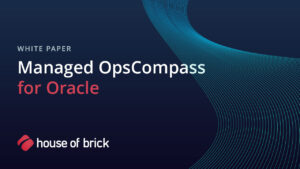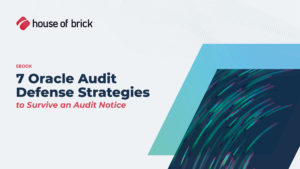Oracle Software License Audit Services
If your organization uses Oracle software, an audit isn’t a matter of “if” — it’s “when.” In 2025, Oracle License Management in 2025 challenges are growing, especially with hybrid cloud migrations and infrastructure changes.
Unprepared audits often result in:
- Massive unexpected fees
- Retroactive license charges
- Forced new purchases
The good news? With preparation, you can control the narrative, limit risk, and dramatically lower your financial exposure.
Understanding Oracle Internal License Audit Support
Many organizations underestimate the value of internal audit teams. With the right processes and tools, your in-house experts can identify risk signals before Oracle does, reducing surprise fees and license gaps.
Understanding What Triggers an Oracle Audit
Oracle typically initiates audits after detecting certain “risk signals,” including:
- Major cloud migrations (AWS, Azure, OCI)
- Virtualization changes (e.g., VMware upgrades)
- Hardware or datacenter expansions
- Licensing changes or downgrades
- Large declines in Oracle support spend
Fact: Oracle uses indirect methods like “informal reviews” or “environment check-ins” to begin audit processes.
Comprehensive Oracle License Review Checklist
A structured review ensures no stone is left unturned. Your checklist should cover: feature usage, VM movements, Java deployments, support renewals, and documentation completeness.
Common Areas Auditors Target
Oracle audits often focus on:
- Unauthorized Oracle Enterprise Edition features (e.g., Partitioning, Data Guard)
- VM movement across unlicensed hosts
- Improper use of filesystemio_options impacting database configurations
- Java SE deployments without active subscription coverage
- Missing or outdated licensing documentation
Oracle Cost Consultants & License Audit Planning
Engaging specialized cost consultants can uncover hidden savings—benchmarking support rates, optimizing feature usage, and negotiating favorable terms to lower audit exposure.
How to Proactively Prepare for an Oracle Audit
1. Conduct a Self-Assessment Before They Do
- Inventory all Oracle deployments, on-prem and in the cloud
- Verify entitlement (contracts, order forms, support renewals)
- Identify active usage of licensable features
2. Implement Real-Time Monitoring
- Track feature activations and VM movement
- Detect changes to Oracle configurations, including filesystemio_options
- Monitor Java SE installations across the environment
- Implement real-time Oracle license monitoring with the right tools
3. Document Everything
- Keep contracts, support renewals, and addenda easily accessible
- Maintain audit trails for all configuration changes
4. Get an External Expert Review
- Oracle License Assessments from House of Brick proactively catch risks
- Our experts model your future state to avoid licensing landmines
Continuous Audit Monitoring with Opscompass
Opscompass Asset Intelligence automates critical audit-readiness tasks
- Tracks Oracle feature usage across hybrid clouds
- Detects and alerts on configuration drift (e.g., filesystemio_options changes)
- Monitors VM movement impacting Oracle licensing scope
- Flags unlicensed Java SE deployments
Real-World Example: A recent Opscompass customer avoided $250,000 in potential audit penalties by identifying unauthorized Data Guard usage before Oracle’s audit team did.
Frequently Asked Questions
Third-party audit services cover entitlement analysis, configuration drift detection, audit defense strategy, and negotiation support to limit retroactive fees.
In-house teams can continuously monitor feature activations, VM movements, and Java deployments, catching issues before Oracle’s audit team does.
It should verify deployments vs. entitlements, audit logs for feature use, contract and support renewal alignment, and maintain complete documentation of changes.
Engage consultants 6–12 months before a forecasted audit or major cloud migration to benchmark support rates, negotiate terms, and model future-state licensing.
Opscompass automates real-time monitoring of feature usage, configuration drift, VM movement, and unlicensed Java SE installations to flag risks immediately.







